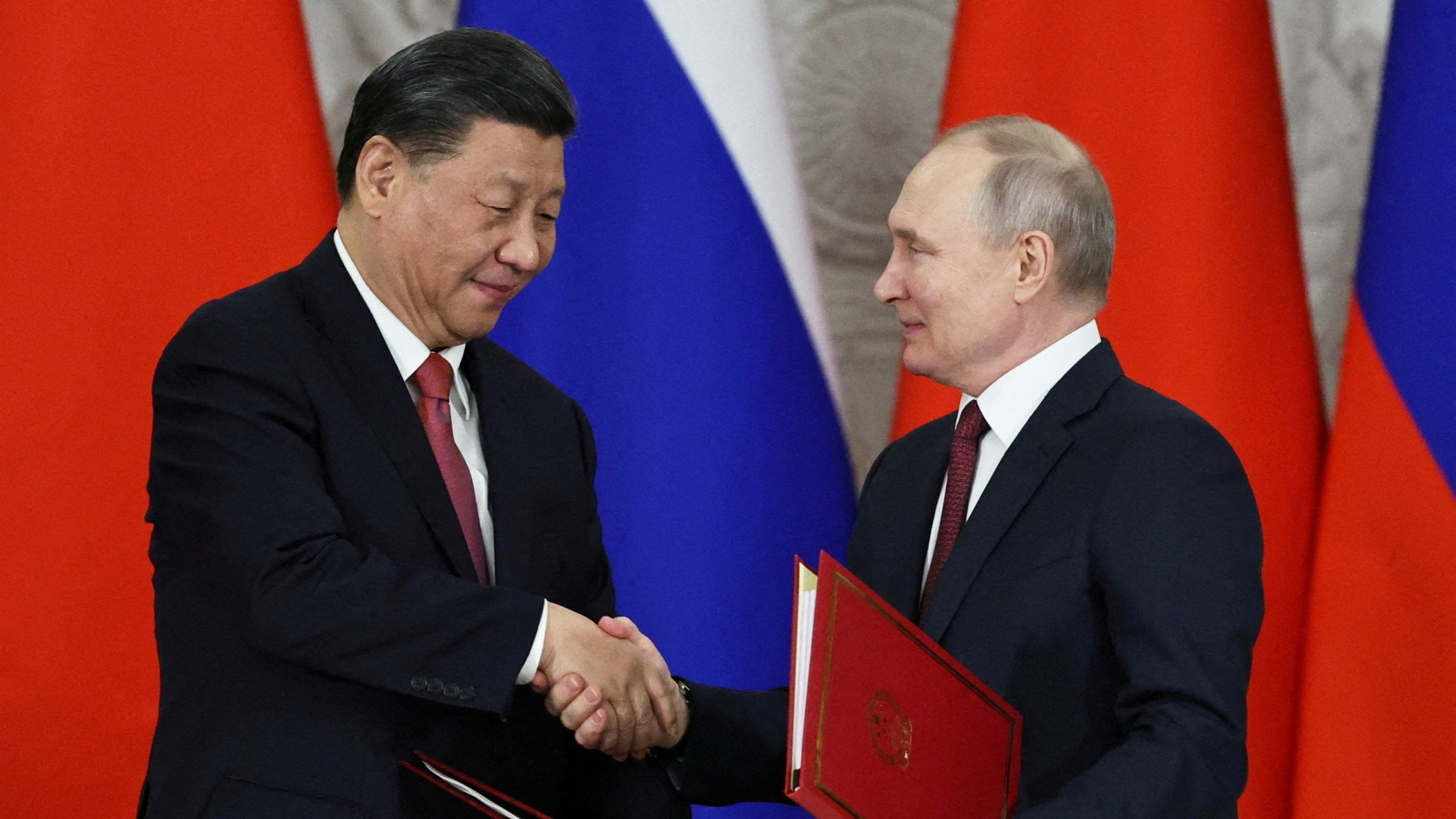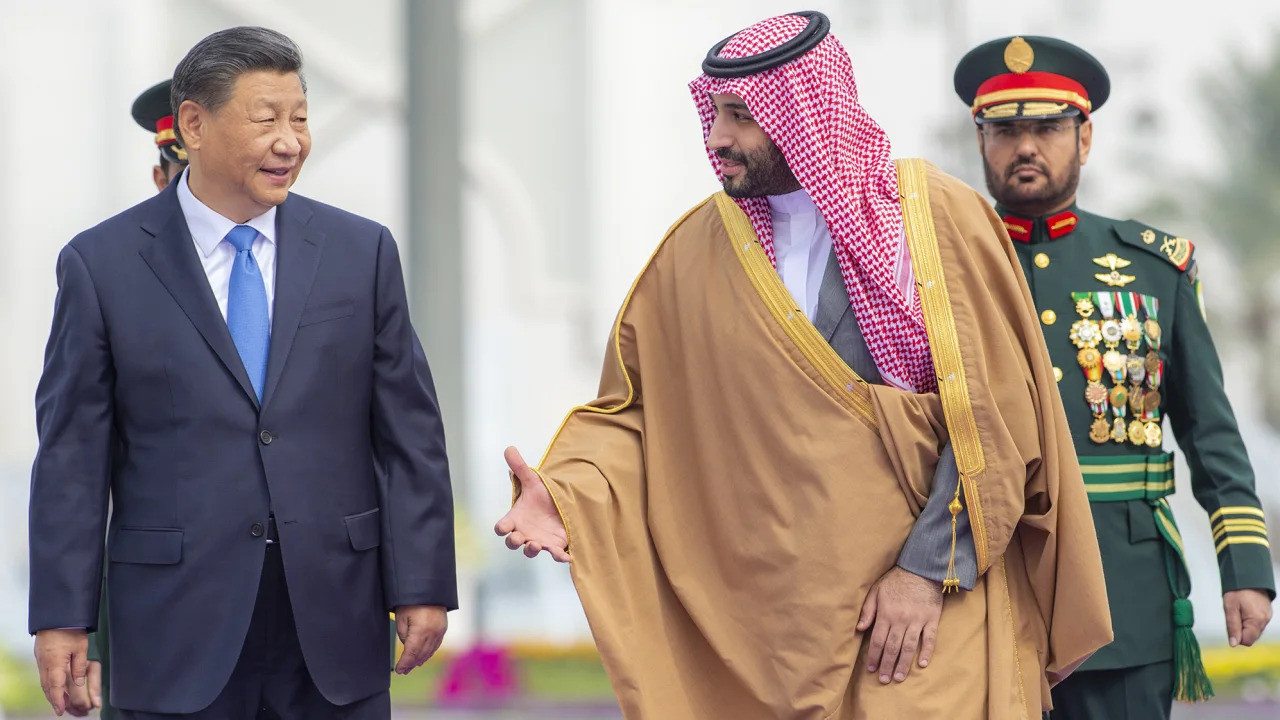“If the US dollar’s global supremacy erodes, America will face a reckoning like none before,” said political commentator Fareed Zakaria in a recent episode of his CNN show ‘Fareed Zakaria GPS’. This sums up the mood in Washington. The reckoning has begun. And we can feel the jitters all over, especially in the Western media, which is in overdrive to hypothesise doomsday scenarios over the imminent fall of the long-ensconced ‘hegemon’ of the financial world. This media noise is rapidly rising to a hysterical crescendo because ‘de-dollarisation’ would imperil the neo-colonialism of the West and its so-called ‘rules-based world order’, in which the dollar has long been ‘weaponised’ against the nations not aligned with the West in global geopolitics.
The West may loathe it, but a tectonic paradigm shift in global geo-economics is happening. The ‘king dollar’ is facing a revolt that could potentially dethrone it after nearly eight decades of undisputed reign over global trade. Countries are increasingly moving away from the greenback, eroding its dominance in international economy, which was ‘dollarised’ in the aftermath of World War II through the 1944 Bretton Woods regime. It might be too early to sound the death knell for the dollar, but the West’s use of the ‘financial nuclear bomb’ against Russia has accelerated efforts by the Global South to decouple from the greenback and hunt for alternatives. However, the end of dollar’s hegemony wouldn’t mean the rise of another hegemon. Instead, it would herald a new multicurrency economic order.
The dollar dominance has been shrinking since 1990 as its share of reserves currencies dropped from 70% to less than 60% in 20 years – and falling steadily, as per the IMF’s Currency Composition of Official Foreign Reserves data. A quarter of the decline is a shift into the Chinese currency yuan, also called renminbi, as well as nontraditional reserve currencies. The yuan has rightly been gaining traction because China is No 1 exporter and No 2 importer of the world. Cross-border yuan settlements grew 29% by value in 2021 compared to a year earlier, according to the People’s Bank of China’s (PBC) 2022 RMB Internationalisation Report. The Bank says it will continue to expand the coverage of cross-border yuan settlement services and aims to provide no less than 30 trillion yuan ($4.34 trillion) of settlement for domestic and foreign market entities throughout 2023.

The yuan appears to be emerging as a burgeoning alternative as countries are increasingly adopting it for bilateral trade with China – and even in multilateral business transactions. The yuan received a big boost when it was embraced by Russia, with which China’s trade is set to cross the $200 billion mark by the end of 2023. Two-thirds of their current trade is conducted in their local currencies. The yuan has also become a major player in Moscow's foreign trade, with its share in the country’s import settlements jumping to 23% by the end of 2022 from only 4% in Jan 2022, as per the latest data from the Bank of Russia. Moreover, the yuan has replaced the dollar as the most traded currency in Russia in monthly trading volume in Feb 2023 for the first time, and the difference became more pronounced in March, according to a Bloomberg report.
President Vladimir Putin has said that his country is ready to increase settlements in yuan in its foreign trade. “We are for the use of Chinese yuan in settlements between Russia and the countries of Asia, Africa, and Latin America,” he said during a meeting with President Xi Jinping on his recent Moscow visit.
Meanwhile, the need to diversify away from the dollar is also being strongly felt in a region America once considered its backyard. Brazil, the biggest economy in South America, has recently signed an agreement with China on trade in mutual currencies. The deal will enable the two nations to conduct their massive $150 billion trade in their local currencies, abandoning the US dollar as an intermediary. According to the Secretary for International Affairs at the Ministry of Finance of Brazil, Tatiana Rosito, 25 countries are already making trade settlements with China in the yuan.
Surprisingly, interest in de-dollarising – or at least in greater use of local currencies – is also growing in the Persian Gulf region where the US has long wielded unrivaled strategic power. Oil-rich Saudi Arabia, which has pegged its riyal to the dollar for decades, is considering trading in other currencies as well. Beijing is the largest trading partner of Riyadh, with their bilateral trade touching $87.3 billion in 2021. The Saudis are considering conducting some of their oil sales to China in the yuan and including yuan-denominated futures contracts – known as the petroyuan – in the pricing model of the state-owned oil behemoth Aramco. If they follow through, this would considerably dent the dollar and boost the Chinese currency’s global standing.
Having said that, ‘de-dollarisation’ doesn’t mean ‘yuan-isation’ of the global economy. A five-nation economic bloc, comprising Brazil, Russia, India, China, and South Africa, is vetting the idea of a new reserve currency to better serve their economic interests, according to Pavel Knyazev, Deputy Director of the Russian Foreign Ministry’s Foreign Policy Planning Department. The new currency will be based on a basket of the currencies of BRICS nations: China’s yuan, Russia’s ruble, India’s rupee, Brazil’s real, and South Africa’s rand.

India, a key ally of the US in South Asia, has defied Western pressure on trade with Russia following the Ukraine war. It has since been transacting oil trade with Moscow in the Indian rupee in an effort to circumvent Western sanctions. India, the world’s fifth largest economy, has also been trying to internationalise its currency to reduce dollar demand and shield its economy from global vicissitudes. It has offered its currency as an alternative for trade to countries that are facing a shortage of dollars, especially Sri Lanka, Bangladesh, and Egypt, who, according to Indian officials, have shown interest to trade in the rupee. The Reserve Bank of India has also granted approvals to domestic and foreign authorised dealer banks in 60 cases for opening the special rupee vostro accounts of correspondent banks from 18 countries.
Another key regional bloc, the Association of Southeast Asian Nations (ASEAN), is also seeking to minimise dependence on the powerful Western currencies and move trade settlements to local currencies. ASEAN ministers and central bank chiefs, who have previously discussed a Local Currency Settlement Scheme, are keen to expand the use of local currencies for trade with a regional cross-border digital payment system. Five of ASEAN’s biggest economies – Indonesia, Malaysia, Singapore, Malaysia, and Thailand – agreed to cooperate on this in November 2022. Indonesian President Joko Widodo has called on fellow ASEAN nations to start using credit cards from local banks and wane off foreign payment systems, arguing that Jakarta needs to insulate itself from geopolitical disruptions.
The desire to abandon the dollar as the currency of choice in international trade is not new given the fact that its hegemony has been the main source of instability and uncertainty in the world economy. But why de-dollarisation suddenly went into overdrive? Why countries are increasingly decoupling from the greenback? The answer is Ukraine war.
The US owes much of its political and economic muscle to the dollar, which it has effectively used in its financial warfare to win wars even without firing a bullet. The US and its allies tried the same tactic to subdue Russia in the Ukraine conflict. But in doing so, they unwittingly set off an international movement to overthrow the mighty dollar. Washington froze a whopping $300 billion of Moscow’s foreign reserves defying sovereign guarantees and cut off its banks from the global financial messaging system known as SWIFT. However, the sanctions not only boomeranged but also stoked fears, especially in the Global South, that the dollar could permanently become an overt tool to pile up political pressure on any nation that does not acquiesce to Western diktats.
The United States has repeatedly exploited the ‘privilège exorbitant’ of the dollar to bully the nations choosing to remain neutral in geopolitical confrontations by stoking poverty and political instability through crippling economic sanctions. In a de-dollarised financial world, the US would not be able to use sanctions as coercion to achieve outcomes that serve its interest. Payment in local currency, or vostro account in regional currencies, would minimise the risk of sanctions undermining an economy.
The dollar is the global reserve currency, which gives the United States exclusive power to not only increase the money supply by printing more currency bills, but also the prerogative to “print” commodities it needs. Global financial circles have long resented the outsized role of the dollar that gives the US ability to “print” oil by printing dollars. Transactions in alternate currencies would rationalise the dollar demand and limit the American power to “print” commodities and instead compete fairly in global trade.
The dollar’s superpower is a huge nuisance for the developing nations that have seen the cost of living rise, debt-servicing burdens pile up, and poverty deepen. Sri Lanka is a case in point. The island nation defaulted on its dollar debt after the soaring greenback stymied its ability to repay. Pakistan is also struggling to avoid sovereign default amid dwindling foreign exchange reserves while the runaway dollar has pushed food inflation and cost of living to an all-time high. Payment in local currency, or vostro accounts, may improve the developing nations’ debt service capacity by making revenues more predictable and less prone to exchange rate instability.
No doubt, past attempts to de-dollarise ended in a whimper. And some in the West predict the same fate for the current drive because they believe the dollar’s dominance is firmly entrenched. I for one would bet against these predictions because this time around the US has whipped up a “perfect storm” by using the “financial nuclear bomb” against Russia, riling up China with a confrontational approach, and alienating the entire Global South with its superpower hubris. De-dollarisation “will not happen overnight,” as French columnist Le Figaro Girard has rightly argued, but the current trend to dump the greenback is “obviously irreversible”.
